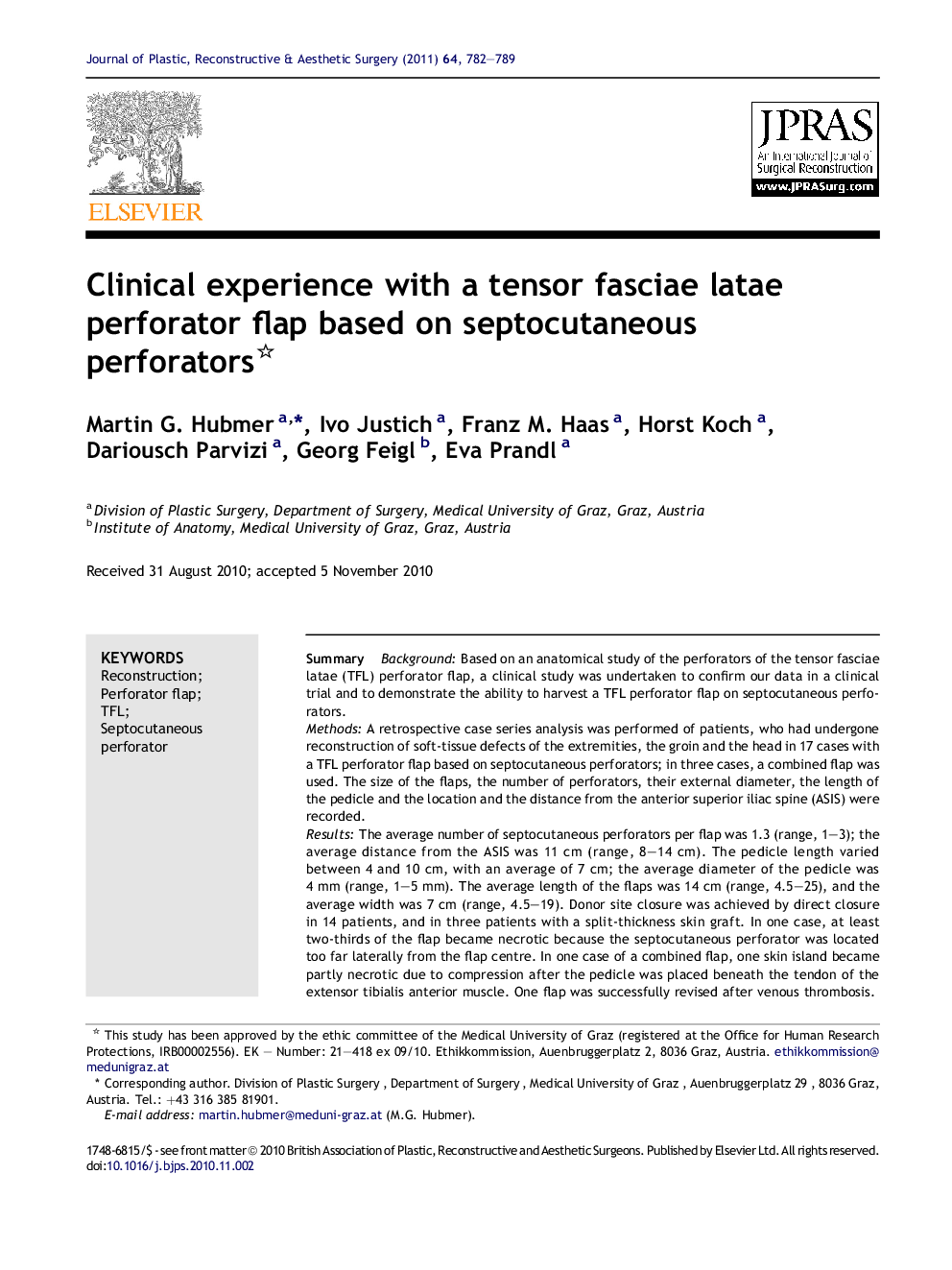| کد مقاله | کد نشریه | سال انتشار | مقاله انگلیسی | نسخه تمام متن |
|---|---|---|---|---|
| 4118997 | 1270344 | 2011 | 8 صفحه PDF | دانلود رایگان |

SummaryBackgroundBased on an anatomical study of the perforators of the tensor fasciae latae (TFL) perforator flap, a clinical study was undertaken to confirm our data in a clinical trial and to demonstrate the ability to harvest a TFL perforator flap on septocutaneous perforators.MethodsA retrospective case series analysis was performed of patients, who had undergone reconstruction of soft-tissue defects of the extremities, the groin and the head in 17 cases with a TFL perforator flap based on septocutaneous perforators; in three cases, a combined flap was used. The size of the flaps, the number of perforators, their external diameter, the length of the pedicle and the location and the distance from the anterior superior iliac spine (ASIS) were recorded.ResultsThe average number of septocutaneous perforators per flap was 1.3 (range, 1–3); the average distance from the ASIS was 11 cm (range, 8–14 cm). The pedicle length varied between 4 and 10 cm, with an average of 7 cm; the average diameter of the pedicle was 4 mm (range, 1–5 mm). The average length of the flaps was 14 cm (range, 4.5–25), and the average width was 7 cm (range, 4.5–19). Donor site closure was achieved by direct closure in 14 patients, and in three patients with a split-thickness skin graft. In one case, at least two-thirds of the flap became necrotic because the septocutaneous perforator was located too far laterally from the flap centre. In one case of a combined flap, one skin island became partly necrotic due to compression after the pedicle was placed beneath the tendon of the extensor tibialis anterior muscle. One flap was successfully revised after venous thrombosis.ConclusionsThe reliability and consistency of the septocutaneous perforators of the TFL flap make planning of this flap easy and the dissection straightforward. Although the number of complications is high in this series, only one complication is related to the flap and the planning itself. With the proposed modifications, we recommend this flap as an interesting alternative to other fasciocutaneous flaps.
Journal: Journal of Plastic, Reconstructive & Aesthetic Surgery - Volume 64, Issue 6, June 2011, Pages 782–789